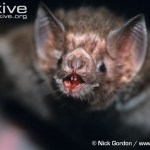rabies
Student guest post by Brandon Woods
A Dangerous Paradise
From jungles with jaguars to crystal blue lakes with freshwater sharks, Nicaragua is one of the most beautiful and dangerous countries in Central America. The brilliant biodiversity attracts millions of tourists each year and the looming volcanoes that pepper the landscape can be an exciting yet unsettling sight. However, in reality much of the danger in Nicaragua comes from the risk of infectious diseases. For example, if you’re planning to travel to this tropical paradise anytime soon, the Center for Disease Control (CDC) states that…
Rabies is a disease without a public relations firm. In developed countries, human disease is incredibly rare--we see typically one or two deaths from rabies each year. In contrast, lightning is responsible for about 60 deaths each year. However, worldwide, rabies is another matter. Today is World Rabies Day, a reminder that 55,000 people still succumb to this virus every year--most of them in impoverished regions of Africa and Asia. While cases in the U.S. are typically due to wildlife exposure (rabid bats or even beavers or rabid kitten), infected dogs remain the main vector of infection in…
Researchers have discovered six people living in remote areas of Peru (Truenococha and Santa Marta) with natural antibodies against rabies despite never having received a vaccination for this deadly virus. They hypothesize that vampire bats actually transmitted small doses of the virus to people over time creating the natural antibodies. All six individuals reported having been exposed to the bats either through a bite or direct contact (scratch, touching).
While the levels of antibodies in the individuals were low, they might be enough to trigger an immune response…
This is the second of 16 student posts, guest-authored by Eileen Ball.
The beauty of dogs and cats as companions is that we don’t have to raise them to go out into the world and be successful. As pet parents we can set the household “rules” according to what works for us and get on with enjoying our pets; hopefully for many years. According 2011-2012 APPA National Pet Owners Survey cats have now surpassed dogs as the most common household pets in the United States. Despite this fact the same survey reports that in 2010 only 30% of US veterinary patients were…
Anti-vaxers are horrible people-- They refuse to receive the recommended/required vaccinations and put everyone else (not just the very young, very old, or otherwise immunocompromised) at risk of contracting preventable diseases.
Anti-vaxers are horrible parents-- They abuse their children with their own personal ignorance and fears, dooming the poor things to preventable diseases and their associated side-effects, and turn their children into little disease spreading monsters (see above, see this years Superbowl, see the day-care fraud story).
Anti-vaxers are also horrible pet owners-- Back…
by Kim Krisberg
Walking around a public health laboratory is seriously cool.
Giant humming machines, rows of test tubes and small, round dishes containing specimens with hard-to-pronounce names, biohazard warnings and emergency shower stations, an egg incubator and liquid nitrogen generator, people in protective gear with bulky white hoods and face shields. Oh, and boxes with severed animal heads inside.
"Everything is just so unusual and every day is different," Dr. Grace Kubin told me as she took me on a tour of the Texas state public health lab in Austin last week.
After years of…
By Kim Krisberg
Just a few days ago, an event in the small town of Lilburn, Georgia, may have saved the life of someone living half a world away. It wasn't a black-tie gala or a celebrity telethon. It wasn't even about a disease that most of us here in the United States think much about. In fact, it was as easy as doing what us animal lovers would do anyway: vaccinating our beloved Fido or Whiskers against rabies.
In honor of World Rabies Day, which takes place Sept. 28, Lilburn's Banfield Pet Hospital held a rabies vaccination clinic, half of the proceeds from which were donated to the…
All the neighborhood kids love mah puppeh, Arnie.
They are out playing in the playground, see me and Arnie coming, and they come running over to give Arnie lovies and to get Arnie kissies.
And, seeing as my parents and most of my aunts and uncles are teachers, I make sure to use this opportunity to teach the kids something: "While its okay to run over to give Arnie lovies, they should always ask an owner whether it is okay to pet their puppy and to never, ever, EVER approach an animal when their owner is not around."
I need to add "If you see a sick birdy or kitten or puppy, tell your parents…
This is great. The College of Physicians of Philadelphia has launched a site on The History of Vaccines. I've been poking around, and there's an incredible amount of stuff to check out. They have a nice FAQ, Top 20 questions about vaccination, as well as some great activities (herd immunity! learn about Koch's postulates! understand the relative risk of vaccination versus other events!) and a metric fuckton of articles and images. Looks to be a fantastic resource for students, and for anyone interested in understanding vaccination.
Mark Pendergrast writes: To kick off this book club discussion of Inside the Outbreaks, I thought I would explain briefly how I came to write the book and then suggest some possible topics for discussion.
The origin of the book goes back to an email I got in 2004 from my old high school and college friend, Andy Vernon, who wrote that I should consider writing the history of the EIS. I emailed back to say that I was honored, but what was the EIS? I had never heard of it. I knew Andy worked on tuberculosis at the CDC, but I didn't know that he had been a state-based EIS officer from 1978…
A nostalgic post, reposted. Nostalgically.
Analyzing 30 years of data detailing a large rabies virus outbreak among North American raccoons, researchers at Emory University have revealed how initial demographic, ecological and genetic processes simultaneously shaped the virus?s geographic spread over time. The study appears online in the Proceedings of The National Academy of Sciences.
That?s the start of an interesting report on Science Daily.
And it reminds me of living through the Great Rabid Raccoon Outbreak in Massachusetts about 15 years back. (Not to be confused with this rabies…
Over 55,000 people die each year from rabies, a disease that is 100% preventable, according to Dr. Guy Palmer, who spoke last night at the University of Washington.
Dr. Palmer is from the School for Global Animal Health, a group that works towards improving global health through advancing preventative care for both humans and animals. One of the preventative measures is through rabies vaccination.
Image from the CDC Public Library of Health.
Rabies cases can be prevented by vaccinating dogs and other animals that carry the virus like raccoons, skunks, and foxes. The virus itself has a…

